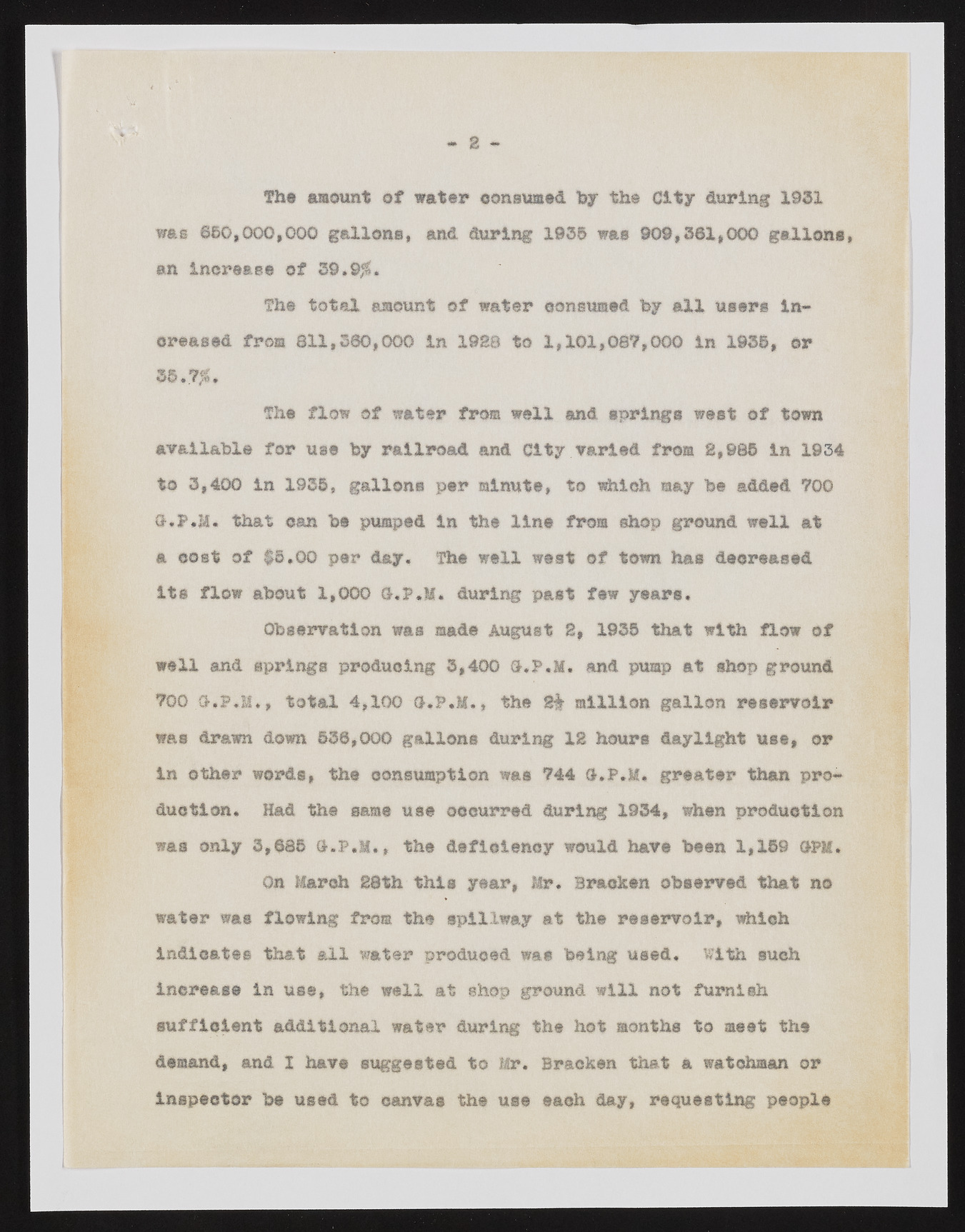Copyright & Fair-use Agreement
UNLV Special Collections provides copies of materials to facilitate private study, scholarship, or research. Material not in the public domain may be used according to fair use of copyrighted materials as defined by copyright law. Please cite us.
Please note that UNLV may not own the copyright to these materials and cannot provide permission to publish or distribute materials when UNLV is not the copyright holder. The user is solely responsible for determining the copyright status of materials and obtaining permission to use material from the copyright holder and for determining whether any permissions relating to any other rights are necessary for the intended use, and for obtaining all required permissions beyond that allowed by fair use.
Read more about our reproduction and use policy.
I agree.Information
Digital ID
Permalink
Details
Member of
More Info
Rights
Digital Provenance
Publisher
Transcription
The amount of water consumed by th© City during 1931 was 650,000,000 gallons, and during 1935 was 909,361,000 gallons, an Increase of 39.9$. The total amount of water consumed toy all users Increased from 811,560,000 In 1988 to 1,101,087,000 In 1935, ©r 33.75. The flow of water fro® well and springs west of town available for use by railroad and City varied from 8,985 In 1934 to 3,400 In 1955, gallons per minute, to which may be added 700 O-.P.M. that can be pumped in the line from shop ground well at a cost of $5.00 per day. The well west of town has decreased its flow about 1,000 C.P.M. during past few years. Observation was made August 2, 1935 that with flow of well and springs producing 3,400 9.P.M. and pump at shop ground 700 O-.P.M., total 4,100 o.P.M., the 8# million gallon reservoir was drawn down 536,000 gallons during 18 hours daylight use, or in other words, the consumption was 744 9.P.M. greater than production. Had the same use occurred during 1934, when production was only 3,685 (KP.M., the deficiency would have been 1,159 OPM. On March 28th this year, Mr. Bracken observed that no water was flowing from the spillway at the reservoir, which indicates that all water produced was being used. With such increase in use, the well at shop ground will not furnish sufficient additional water during the hot months to meet the demand, and I have suggested to Mr. Bracken that a watchman or inspector be used to canvas the use each day, requesting people

